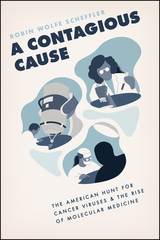
A Contagious Cause is the first book to trace the century-long hunt for a human cancer virus in America, an effort whose scale exceeded that of the Human Genome Project. The government’s campaign merged the worlds of molecular biology, public health, and military planning in the name of translating laboratory discoveries into useful medical therapies. However, its expansion into biomedical research sparked fierce conflict. Many biologists dismissed the suggestion that research should be planned and the idea of curing cancer by a vaccine or any other means as unrealistic, if not dangerous. Although the American hunt was ultimately fruitless, this effort nonetheless profoundly shaped our understanding of life at its most fundamental levels. A Contagious Cause links laboratory and legislature as has rarely been done before, creating a new chapter in the histories of science and American politics.

Approximately eight percent of our DNA contains retroviral sequences that are millions of years old. Through engaging stories of scientific discovery, Anna Marie Skalka explains our evolving knowledge of these ancient denizens of the biosphere and how this understanding has significantly advanced research in genetic engineering, gene delivery systems, and precision medicine.
Discovering Retroviruses begins with the pioneer scientists who first encountered these RNA-containing viruses and solved the mystery of their reproduction. Like other viruses, retroviruses invade the cells of a host organism to reproduce. What makes them “retro” is a unique process of genetic information transfer. Instead of transcribing DNA into RNA as all living cells do, they transcribe their RNA into DNA. This viral DNA is then spliced into the host’s genome, where the cell’s synthetic machinery is co-opted to make new virus particles. The 100,000 pieces of retroviral DNA in the human genome are remnants from multiple invasions of our ancestors’ “germline” cells—the cells that allow a host organism to reproduce. Most of these bits of retroviral DNA are degenerated fossils, but some have been exploited during evolution, with profound effects on our physiology.
Some present-day circulating retroviruses cause cancers in humans and other animals. Others, like HIV, cause severe immunodeficiencies. But retroviruses also hold clues to innovative approaches that can prevent and treat these diseases. In laboratories around the world, retroviruses continue to shed light on future possibilities that are anything but “retro.”
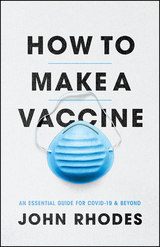
As the COVID-19 pandemic has affected every corner of the world, changing our relationship to our communities, to our jobs, and to each other, the most pressing question has been—when will it end? Researchers around the globe are urgently trying to answer this question by racing to test and distribute a vaccine that could end the greatest public health threat of our time. In How to Make a Vaccine, an expert who has firsthand experience developing vaccines tells an optimistic story of how three hundred years of vaccine discovery and a century and a half of immunology research have come together at this powerful moment—and will lead to multiple COVID-19 vaccines.
Dr. John Rhodes draws on his experience as an immunologist, including working alongside a young Anthony Fauci, to unravel the mystery of how vaccines are designed, tested, and produced at scale for global deployment. Concise and accessible, this book describes in everyday language how the immune system evolved to combat infection, how viruses responded by evolving ways to evade our defenses, and how vaccines do their work. That history, and the pace of current research developments, make Rhodes hopeful that multiple vaccines will protect us. Today the complex workings of the immune system are well understood. The tools needed by biomedical scientists stand ready to be used, and more than 160 vaccine candidates have already been produced. But defeating COVID-19 won’t be the end of the story: Rhodes describes how discoveries today are also empowering scientists to combat future threats to global health, including a recent breakthrough in the development of genetic vaccines, which have never before been used in humans.
As the world prepares for a vaccine, Rhodes offers a current and informative look at the science and strategies that deliver solutions to the crisis.
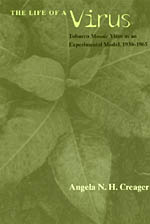
Focusing on the tobacco mosaic virus (TMV) research conducted in Nobel laureate Wendell Stanley's lab, Creager argues that TMV served as a model system for virology and molecular biology, much as the fruit fly and laboratory mouse have for genetics and cancer research. She examines how the experimental techniques and instruments Stanley and his colleagues developed for studying TMV were generalized not just to other labs working on TMV, but also to research on other diseases such as poliomyelitis and influenza and to studies of genes and cell organelles. The great success of research on TMV also helped justify increased spending on biomedical research in the postwar years (partly through the National Foundation for Infantile Paralysis's March of Dimes)—a funding priority that has continued to this day.
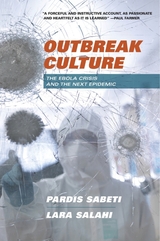
An award-winning genetic researcher who helped contain the Ebola outbreak and a prize-winning journalist reveal what it will take to prevent the next pandemic from spiraling out of control.
As we saw with our response to Ebola and Zika—and are seeing now with the disastrous early handling of the coronavirus COVID-19 outbreak—a lack of preparedness, delays in action, and large-scale system-wide problems with the distribution of critical medical resources can result in lost lives.
Outbreak Culture examines each phase of the 2014 Ebola outbreak in West Africa—one of the largest and deadliest epidemics to date—and identifies factors that prevented key information from reaching physicians. Drawing insights from clinical workers, data collectors, organizational experts, and public health researchers, Pardis Sabeti and Lara Salahi expose a fractured system that failed to gather and share knowledge of the virus and ensure timely containment. The authors describe how much more could have been done by global medical and political organizations to safeguard the well-being of caregivers, patients, and communities affected by this devastating outbreak and they outline changes that are urgently needed to ensure a more effective coordinated response to the next epidemic.
Secrecy, competition, and poor coordination plague nearly every major public health crisis—and we are seeing their deadly consequences play out again. A work of fearless integrity and unassailable authority, Outbreak Culture seeks to change the culture of responders.
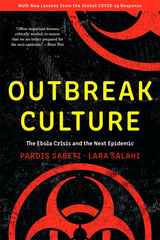
A Choice Outstanding Academic Title of the Year
“A critical, poignant postmortem of the epidemic.”
—Washington Post
“Forceful and instructive…Sabeti and Salahi uncover competition, sabotage, fear, blame, and disorganization bordering on chaos, features that are seen in just about any lethal epidemic.”
—Paul Farmer, cofounder of Partners in Health
“The central theme of the book…is that common threads of dysfunction run through responses to epidemics…The power of Outbreak Culture is its universality.”
—Nature
“Sabeti and Salahi present a wealth of evidence supporting the imperative that outbreak response must operate in a coordinated, real-time manner.”
—Science
As we saw with the Ebola outbreak—and the disastrous early handling of the COVID-19 coronavirus pandemic—a lack of preparedness, delays, and system-wide problems with the distribution of critical medical supplies can have deadly consequences. Yet after every outbreak, the systems put in place to coordinate emergency responses are generally dismantled.
One of America’s top biomedical researchers, Dr. Pardis Sabeti, and her Pulitzer Prize–winning collaborator, Lara Salahi, argue that these problems are built into the ecosystem of our emergency responses. With an understanding of the path of disease and insight into political psychology, they show how secrecy, competition, and poor coordination plague nearly every major public health crisis and reveal how much more could be done to safeguard the well-being of caregivers, patients, and vulnerable communities. A work of fearless integrity and unassailable authority, Outbreak Culture seeks to ensure that we make some urgently needed changes before the next pandemic.
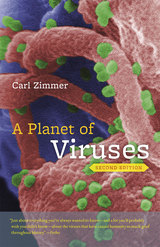
Fortunately, science writer Carl Zimmer is here to guide us. In this compact volume, he tells the story of how the smallest living things known to science can bring an entire planet of people to a halt--and what we can learn from how we've defeated them in the past.
Planet of Viruses covers such threats as Ebola, MERS, and chikungunya virus; tells about recent scientific discoveries, such as a hundred-million-year-old virus that infected the common ancestor of armadillos, elephants, and humans; and shares new findings that show why climate change may lead to even deadlier outbreaks. Zimmer’s lucid explanations and fascinating stories demonstrate how deeply humans and viruses are intertwined. Viruses helped give rise to the first life-forms, are responsible for many of our most devastating diseases, and will continue to control our fate for centuries. Thoroughly readable, and, for all its honesty about the threats, as reassuring as it is frightening, A Planet of Viruses is a fascinating tour of a world we all need to better understand.
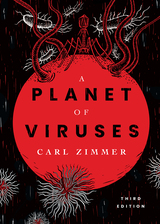
Fully revised and updated, with new illustrations and a new chapter about coronaviruses and the spread of Covid-19, this third edition of Carl Zimmer’s A Planet of Viruses pulls back the veil on this hidden world. It presents the latest research on how viruses hold sway over our lives and our biosphere, how viruses helped give rise to the first life-forms, how viruses are producing new diseases, how we can harness viruses for our own ends, and how viruses will continue to control our fate as long as life endures.

Viruses are the most abundant biological entities on Earth, and arguably the most successful. They are not technically alive, but—as infectious vehicles of genetic information—they have a remarkable capacity to invade, replicate, and evolve within living cells. Synthesizing a large body of recent research, Michael Cordingley goes beyond our familiarity with viral infections to show how viruses spur evolutionary change in their hosts, shape global ecosystems, and influence every domain of life.
In the last few decades, research has revealed that viruses are fundamental to the photosynthetic capacity of the world’s oceans and the composition of the human microbiome. Perhaps most fascinating, viruses are now recognized as remarkable engines of the genetic innovation that fuels natural selection and catalyzes evolution in all domains of life. Viruses have coevolved with their hosts since the beginning of life on our planet and are part of the evolutionary legacy of every species that has ever lived.
Cordingley explains how viruses are responsible for the creation of many feared bacterial diseases and the emergence of newly pathogenic and drug-resistant strains. And as more and more viruses jump to humans from other animals, new epidemics of viral disease will threaten global society. But Cordingley shows that we can adapt, relying on our evolved cognitive and cultural capacities to limit the consequences of viral infections. Piecing together the story of viruses’ major role within and beyond human disease, Viruses creates a valuable roadmap through the rapidly expanding terrain of virology.
READERS
Browse our collection.
PUBLISHERS
See BiblioVault's publisher services.
STUDENT SERVICES
Files for college accessibility offices.
UChicago Accessibility Resources
home | accessibility | search | about | contact us
BiblioVault ® 2001 - 2024
The University of Chicago Press









